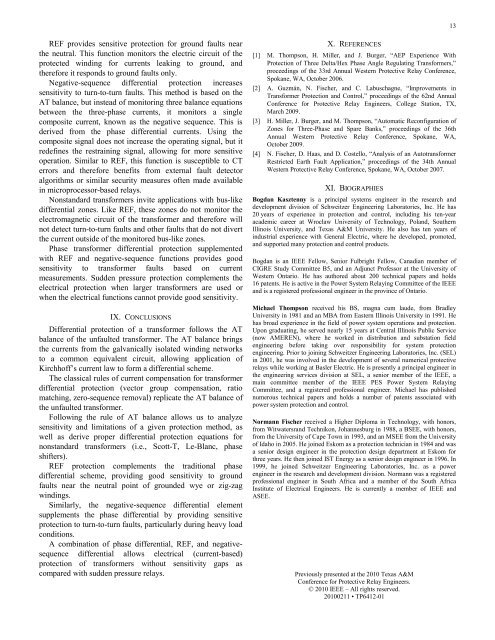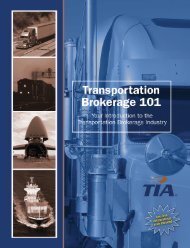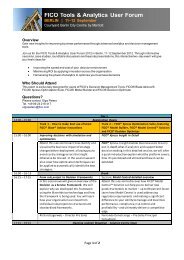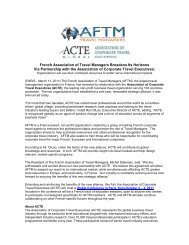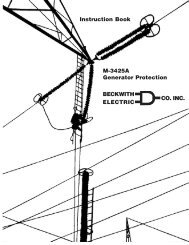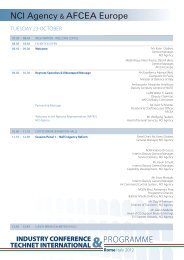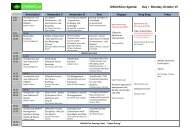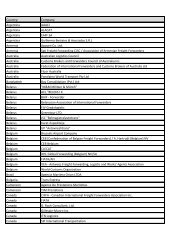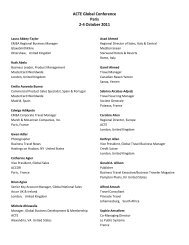Fundamentals of Short-Circuit Protection for Transformers
Fundamentals of Short-Circuit Protection for Transformers
Fundamentals of Short-Circuit Protection for Transformers
You also want an ePaper? Increase the reach of your titles
YUMPU automatically turns print PDFs into web optimized ePapers that Google loves.
REF provides sensitive protection <strong>for</strong> ground faults near<br />
the neutral. This function monitors the electric circuit <strong>of</strong> the<br />
protected winding <strong>for</strong> currents leaking to ground, and<br />
there<strong>for</strong>e it responds to ground faults only.<br />
Negative-sequence differential protection increases<br />
sensitivity to turn-to-turn faults. This method is based on the<br />
AT balance, but instead <strong>of</strong> monitoring three balance equations<br />
between the three-phase currents, it monitors a single<br />
composite current, known as the negative sequence. This is<br />
derived from the phase differential currents. Using the<br />
composite signal does not increase the operating signal, but it<br />
redefines the restraining signal, allowing <strong>for</strong> more sensitive<br />
operation. Similar to REF, this function is susceptible to CT<br />
errors and there<strong>for</strong>e benefits from external fault detector<br />
algorithms or similar security measures <strong>of</strong>ten made available<br />
in microprocessor-based relays.<br />
Nonstandard trans<strong>for</strong>mers invite applications with bus-like<br />
differential zones. Like REF, these zones do not monitor the<br />
electromagnetic circuit <strong>of</strong> the trans<strong>for</strong>mer and there<strong>for</strong>e will<br />
not detect turn-to-turn faults and other faults that do not divert<br />
the current outside <strong>of</strong> the monitored bus-like zones.<br />
Phase trans<strong>for</strong>mer differential protection supplemented<br />
with REF and negative-sequence functions provides good<br />
sensitivity to trans<strong>for</strong>mer faults based on current<br />
measurements. Sudden pressure protection complements the<br />
electrical protection when larger trans<strong>for</strong>mers are used or<br />
when the electrical functions cannot provide good sensitivity.<br />
IX. CONCLUSIONS<br />
Differential protection <strong>of</strong> a trans<strong>for</strong>mer follows the AT<br />
balance <strong>of</strong> the unfaulted trans<strong>for</strong>mer. The AT balance brings<br />
the currents from the galvanically isolated winding networks<br />
to a common equivalent circuit, allowing application <strong>of</strong><br />
Kirchh<strong>of</strong>f’s current law to <strong>for</strong>m a differential scheme.<br />
The classical rules <strong>of</strong> current compensation <strong>for</strong> trans<strong>for</strong>mer<br />
differential protection (vector group compensation, ratio<br />
matching, zero-sequence removal) replicate the AT balance <strong>of</strong><br />
the unfaulted trans<strong>for</strong>mer.<br />
Following the rule <strong>of</strong> AT balance allows us to analyze<br />
sensitivity and limitations <strong>of</strong> a given protection method, as<br />
well as derive proper differential protection equations <strong>for</strong><br />
nonstandard trans<strong>for</strong>mers (i.e., Scott-T, Le-Blanc, phase<br />
shifters).<br />
REF protection complements the traditional phase<br />
differential scheme, providing good sensitivity to ground<br />
faults near the neutral point <strong>of</strong> grounded wye or zig-zag<br />
windings.<br />
Similarly, the negative-sequence differential element<br />
supplements the phase differential by providing sensitive<br />
protection to turn-to-turn faults, particularly during heavy load<br />
conditions.<br />
A combination <strong>of</strong> phase differential, REF, and negativesequence<br />
differential allows electrical (current-based)<br />
protection <strong>of</strong> trans<strong>for</strong>mers without sensitivity gaps as<br />
compared with sudden pressure relays.<br />
[1]<br />
X. REFERENCES<br />
M. Thompson, H. Miller, and J. Burger, “AEP Experience With<br />
<strong>Protection</strong> <strong>of</strong> Three Delta/Hex Phase Angle Regulating Trans<strong>for</strong>mers,”<br />
proceedings <strong>of</strong> the 33rd Annual Western Protective Relay Conference,<br />
Spokane, WA, October 2006.<br />
[2] A. Guzmán, N. Fischer, and C. Labuschagne, “Improvements in<br />
Trans<strong>for</strong>mer <strong>Protection</strong> and Control,” proceedings <strong>of</strong> the 62nd Annual<br />
Conference <strong>for</strong> Protective Relay Engineers, College Station, TX,<br />
March 2009.<br />
[3] H. Miller, J. Burger, and M. Thompson, “Automatic Reconfiguration <strong>of</strong><br />
Zones <strong>for</strong> Three-Phase and Spare Banks,” proceedings <strong>of</strong> the 36th<br />
Annual Western Protective Relay Conference, Spokane, WA,<br />
[4]<br />
October 2009.<br />
N. Fischer, D. Haas, and D. Costello, “Analysis <strong>of</strong> an Autotrans<strong>for</strong>mer<br />
Restricted Earth Fault Application,” proceedings <strong>of</strong> the 34th Annual<br />
Western Protective Relay Conference, Spokane, WA, October 2007.<br />
XI. BIOGRAPHIES<br />
Bogdan Kasztenny is a principal systems engineer in the research and<br />
development division <strong>of</strong> Schweitzer Engineering Laboratories, Inc. He has<br />
20 years <strong>of</strong> experience in protection and control, including his ten-year<br />
academic career at Wroclaw University <strong>of</strong> Technology, Poland, Southern<br />
Illinois University, and Texas A&M University. He also has ten years <strong>of</strong><br />
industrial experience with General Electric, where he developed, promoted,<br />
and supported many protection and control products.<br />
Bogdan is an IEEE Fellow, Senior Fulbright Fellow, Canadian member <strong>of</strong><br />
CIGRE Study Committee B5, and an Adjunct Pr<strong>of</strong>essor at the University <strong>of</strong><br />
Western Ontario. He has authored about 200 technical papers and holds<br />
16 patents. He is active in the Power System Relaying Committee <strong>of</strong> the IEEE<br />
and is a registered pr<strong>of</strong>essional engineer in the province <strong>of</strong> Ontario.<br />
Michael Thompson received his BS, magna cum laude, from Bradley<br />
University in 1981 and an MBA from Eastern Illinois University in 1991. He<br />
has broad experience in the field <strong>of</strong> power system operations and protection.<br />
Upon graduating, he served nearly 15 years at Central Illinois Public Service<br />
(now AMEREN), where he worked in distribution and substation field<br />
engineering be<strong>for</strong>e taking over responsibility <strong>for</strong> system protection<br />
engineering. Prior to joining Schweitzer Engineering Laboratories, Inc. (SEL)<br />
in 2001, he was involved in the development <strong>of</strong> several numerical protective<br />
relays while working at Basler Electric. He is presently a principal engineer in<br />
the engineering services division at SEL, a senior member <strong>of</strong> the IEEE, a<br />
main committee member <strong>of</strong> the IEEE PES Power System Relaying<br />
Committee, and a registered pr<strong>of</strong>essional engineer. Michael has published<br />
numerous technical papers and holds a number <strong>of</strong> patents associated with<br />
power system protection and control.<br />
Normann Fischer received a Higher Diploma in Technology, with honors,<br />
from Witwatersrand Technikon, Johannesburg in 1988, a BSEE, with honors,<br />
from the University <strong>of</strong> Cape Town in 1993, and an MSEE from the University<br />
<strong>of</strong> Idaho in 2005. He joined Eskom as a protection technician in 1984 and was<br />
a senior design engineer in the protection design department at Eskom <strong>for</strong><br />
three years. He then joined IST Energy as a senior design engineer in 1996. In<br />
1999, he joined Schweitzer Engineering Laboratories, Inc. as a power<br />
engineer in the research and development division. Normann was a registered<br />
pr<strong>of</strong>essional engineer in South Africa and a member <strong>of</strong> the South Africa<br />
Institute <strong>of</strong> Electrical Engineers. He is currently a member <strong>of</strong> IEEE and<br />
ASEE.<br />
Previously presented at the 2010 Texas A&M<br />
Conference <strong>for</strong> Protective Relay Engineers.<br />
© 2010 IEEE – All rights reserved.<br />
20100211 • TP6412-01<br />
13


